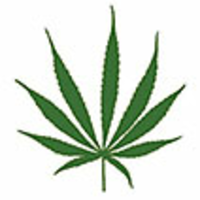acespicoli
Well-known member
Let us strive together IC fam to correctly describe our cannabis plants ? 
Herbarium
What is a herbarium? A herbarium (Latin: hortus siccus) is a collection of plant samples preserved for long-term study, usually in the form of dried and pressed plants mounted on paper. The dried and mounted plant samples are generally referred to as herbarium specimens.
Im writing this thread as a consensus on terminology related to cannabis.
Just to kick things off im adding a vauge generic description from the wiki to get things going in the right direction

Cannabis is an annual, dioecious, flowering herb. The leaves are palmately compound or digitate, with serrate leaflets.[14] The first pair of leaves usually have a single leaflet, the number gradually increasing up to a maximum of about thirteen leaflets per leaf (usually seven or nine), depending on variety and growing conditions. At the top of a flowering plant, this number again diminishes to a single leaflet per leaf. The lower leaf pairs usually occur in an opposite leaf arrangement and the upper leaf pairs in an alternate arrangement on the main stem of a mature plant.
The leaves have a peculiar and diagnostic venation pattern (which varies slightly among varieties) that allows for easy identification of cannabis leaves from unrelated species with similar leaves. As is common in serrated leaves, each serration has a central vein extending to its tip, but in cannabis this originates from lower down the central vein of the leaflet, typically opposite to the position of the second notch down. This means that on its way from the midrib of the leaflet to the point of the serration, the vein serving the tip of the serration passes close by the intervening notch. Sometimes the vein will pass tangentially to the notch, but often will pass by at a small distance; when the latter happens a spur vein (or occasionally two) branches off and joins the leaf margin at the deepest point of the notch. Tiny samples of Cannabis also can be identified with precision by microscopic examination of leaf cells and similar features, requiring special equipment and expertise.[15]

 en.wikipedia.org
en.wikipedia.org
 en.wikipedia.org
en.wikipedia.org

 en.wikipedia.org
en.wikipedia.org

Herbarium
What is a herbarium? A herbarium (Latin: hortus siccus) is a collection of plant samples preserved for long-term study, usually in the form of dried and pressed plants mounted on paper. The dried and mounted plant samples are generally referred to as herbarium specimens.
Im writing this thread as a consensus on terminology related to cannabis.
Just to kick things off im adding a vauge generic description from the wiki to get things going in the right direction
Description
Cannabis is an annual, dioecious, flowering herb. The leaves are palmately compound or digitate, with serrate leaflets.[14] The first pair of leaves usually have a single leaflet, the number gradually increasing up to a maximum of about thirteen leaflets per leaf (usually seven or nine), depending on variety and growing conditions. At the top of a flowering plant, this number again diminishes to a single leaflet per leaf. The lower leaf pairs usually occur in an opposite leaf arrangement and the upper leaf pairs in an alternate arrangement on the main stem of a mature plant.
The leaves have a peculiar and diagnostic venation pattern (which varies slightly among varieties) that allows for easy identification of cannabis leaves from unrelated species with similar leaves. As is common in serrated leaves, each serration has a central vein extending to its tip, but in cannabis this originates from lower down the central vein of the leaflet, typically opposite to the position of the second notch down. This means that on its way from the midrib of the leaflet to the point of the serration, the vein serving the tip of the serration passes close by the intervening notch. Sometimes the vein will pass tangentially to the notch, but often will pass by at a small distance; when the latter happens a spur vein (or occasionally two) branches off and joins the leaf margin at the deepest point of the notch. Tiny samples of Cannabis also can be identified with precision by microscopic examination of leaf cells and similar features, requiring special equipment and expertise.[15]

Cannabis - Wikipedia
Glossary of botanical terms - Wikipedia

Glossary of leaf morphology - Wikipedia
Last edited:





